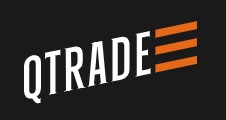Canadian real estate prices continue to show strength, and interest rates are on the rise – which means that the cost of owning your own home keeps rising, too. If you’re trying to save up for a home purchase, it can seem an insurmountable goal. But there are some accounts and tax breaks that are designed to help.
First Home Savings Account (FHSA)
In April 2023, the Canadian Government introduced the First Home Savings Account (FHSA), a new registered savings plan designed to help Canadians save for a down payment on their first home. FHSA contributions are tax-deductible (like an RRSP), and withdrawals made to purchase a first home are non-taxable (like a TFSA).
The FHSA allows account holders to contribute up to $8,000 in any calendar year to a lifetime maximum of $40,000. Like with an RRSP, your annual FHSA contributions can be claimed as an income tax deduction for contributions made in that year. However, unlike an RRSP, your FHSA contributions made during the first 60 days of the calendar year cannot be used for tax deductions for the previous year. Unused contribution room can carry forward to the following year up to a maximum of $8,000.
If you use your FHSA savings to buy a home, the withdrawal is not taxable. If you don't use your FHSA to buy a home, you can transfer the funds to an RRSP or RRIF account. The transfer would not impact your RRSP’s available contribution room. You can also simply withdraw the funds from your FHSA, but the amount would be subject to withholding tax and be included as income on your tax return.
Registered Retirement Savings Plan (RRSP)
Though primarily an investment plan for saving toward your retirement, a portion of the accumulated funds in your registered retirement savings plan (RRSP) can be used for a home purchase through the Home Buyer’s Plan (HBP).
The 2019 Federal Budget increased the HBP limit from $25,000 to $35,000 for RRSP withdrawals for a down payment used to buy or build a qualifying home. You have 15 years to pay it back into your RRSP. Generally, it is for a first-time buyer, but you may qualify if you are recently separated or claim the disability tax credit. Learn more here.
Tax-Free Savings Account (TFSA)
The tax-free savings account (TFSA) allows Canadians who are 18 and older to set money aside tax-free throughout their lifetime. TFSA contributions are not deductible for income tax purposes, but any amount contributed as well as any income earned in the account is generally tax-free, even when it is withdrawn.
To use your TFSA savings toward a home purchase is easy. The savings are easily accessible, and withdrawals from your TFSA are tax free and can even be recontributed later. You can use your TFSA savings in combination with the RRSP HBP and withdrawals from an FHSA.
How does an FHSA differ from the Home Buyers’ Plan?
Currently, the HBP allows first-time homebuyers to withdraw up to $35,000 tax-free from their RRSP to purchase or build a new home. However, you must pay that money back to your RRSP within 15 years. In an FHSA, you are not required to pay back the funds withdrawn toward the purchase of a qualifying home. At this time, the program allows you to make use of both FHSA withdrawals and HBP withdrawals toward a qualifying home purchase.
Are there any tax breaks for home buyers?
First-Time Home Buyers Tax Credit (HBTC)
As a first-time home buyer, you may qualify for a tax credit worth $1,500. You are considered a first-time home buyer if you didn’t live in a home owned by you or your spouse/common-law partner in any of the four preceding years. If you claim the disability tax credit, you do not have to be first-time.
GST/HST New home rebate
If you bought a new home from a builder, you may be able to claim a portion of the GST/HST that is charged to you. Or, if you built or made substantial renovations to your primary residence, you may also be entitled to a rebate on GST/HST paid. Learn more here.
Principal residence exemption
When you sell your home, there is no tax on its gain in value, but you must report the sale amount on Schedule 3, Capital Gains (or Losses) of your tax return in the year of the sale and file Form T2091(IND), Designation of a Property as a Principal Residence. There isn’t any tax on the gain, but penalties apply if you are late to report. Learn more here.
Find out more about tax programs related to home ownership at the Government of Canada website.
What’s the First-Time Home Buyer Incentive?
Though not related to your annual tax filing, the First-time Home Buyer Incentive (FTHBI) is a complement to the HBTC and HBP for first-time home buyers. It helps Canadians purchase their own homes.
You may receive 5% or 10% of the home’s purchase price from Canada Mortgage and Housing Corporation to put toward a down payment. It lowers the mortgage carrying costs, making home ownership a little more affordable. The amount must be repaid in 25 years or when the property is sold. Learn more here.
NOTE: First-time homebuyers purchasing a home in the Toronto, Vancouver, or Victoria Census Metropolitan Areas are now eligible for an increased Qualifying Annual Income of $150,000 instead of $120,000, and an increased total borrowing amount of 4.5 instead of 4.0 times their qualifying income. Confirm if the home you are looking to buy is part of the Toronto, Vancouver or Victoria Census Metropolitan Area!
The information contained in this article was obtained from sources believed to be reliable; however, we cannot guarantee that it is accurate or complete. This material is for informational and educational purposes and it is not intended to provide specific advice including, without limitation, investment, financial, tax or similar matters.







